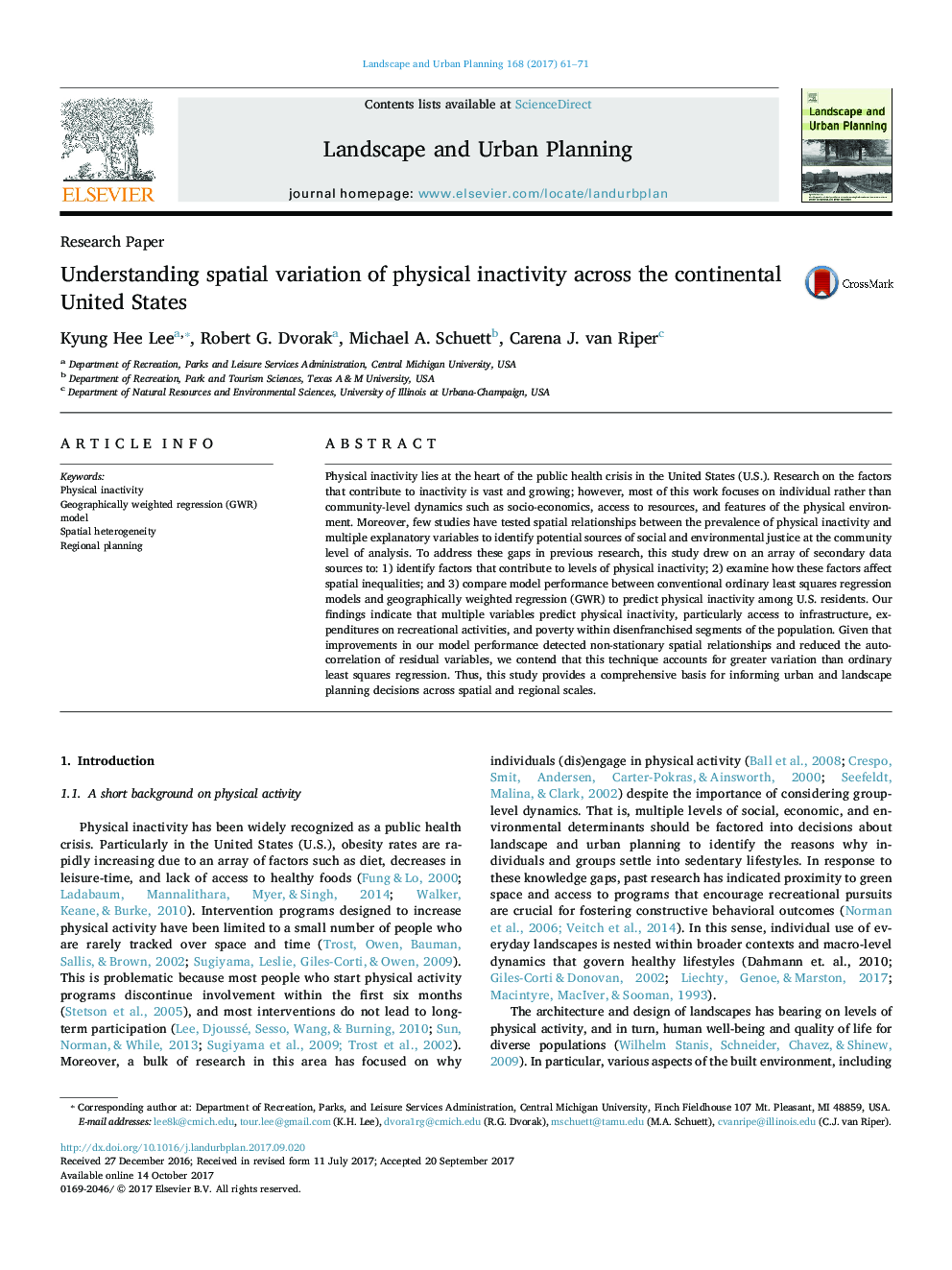| کد مقاله | کد نشریه | سال انتشار | مقاله انگلیسی | نسخه تمام متن |
|---|---|---|---|---|
| 5114982 | 1484590 | 2017 | 11 صفحه PDF | دانلود رایگان |
- Prevalence of physical inactivity in the U.S. was spatially clustered.
- There were multiple socio-economic and physical predictors of physical inactivity.
- Spatial locations of injustice were identified to address the public health crisis.
- Geographic hotspots and coldspots of inactivity were highlighted at a national scale.
- GWR regression was superior to OLS in detecting spatially varying relationships.
Physical inactivity lies at the heart of the public health crisis in the United States (U.S.). Research on the factors that contribute to inactivity is vast and growing; however, most of this work focuses on individual rather than community-level dynamics such as socio-economics, access to resources, and features of the physical environment. Moreover, few studies have tested spatial relationships between the prevalence of physical inactivity and multiple explanatory variables to identify potential sources of social and environmental justice at the community level of analysis. To address these gaps in previous research, this study drew on an array of secondary data sources to: 1) identify factors that contribute to levels of physical inactivity; 2) examine how these factors affect spatial inequalities; and 3) compare model performance between conventional ordinary least squares regression models and geographically weighted regression (GWR) to predict physical inactivity among U.S. residents. Our findings indicate that multiple variables predict physical inactivity, particularly access to infrastructure, expenditures on recreational activities, and poverty within disenfranchised segments of the population. Given that improvements in our model performance detected non-stationary spatial relationships and reduced the autocorrelation of residual variables, we contend that this technique accounts for greater variation than ordinary least squares regression. Thus, this study provides a comprehensive basis for informing urban and landscape planning decisions across spatial and regional scales.
Journal: Landscape and Urban Planning - Volume 168, December 2017, Pages 61-71
